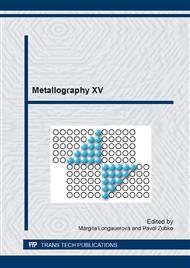p.3
p.8
p.16
p.23
p.31
p.41
p.45
p.51
In Situ Observation Method for Quantitative Evaluation of Solidification Phenomena and Solidification Cracks during Welding
Abstract:
Solidification cracking during welding is very serious problem for practical use. Therefore, there are so many reports concerning solidification cracking. Normally, solidification cracking susceptibility of material is quantitatively evaluated using Trans-Varestraint test. On the other hand, local solidification cracking strain was tried to measure precisely using in-situ observation method, called MISO method about 30 years ago. Recently, digital high-speed video camera develops very fast and its image quality is very high. Therefore, we have started to observe solidification crack using in site observation method. In this paper, the local critical strain of a solidification crack was measured and the high temperature ductility curves of weld metals having different dilution ratios and different grain sizes to evaluate quantitatively the effects of dilution ratio and grain size on solidification cracking susceptibility by using an improved in situ observation method.
Info:
Periodical:
Pages:
3-7
Citation:
Online since:
April 2014
Authors:
Keywords:
Price:
Сopyright:
© 2014 Trans Tech Publications Ltd. All Rights Reserved
Share:
Citation:


